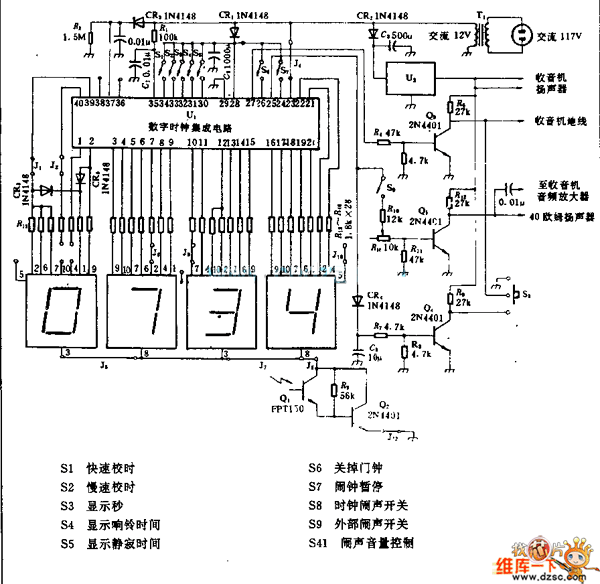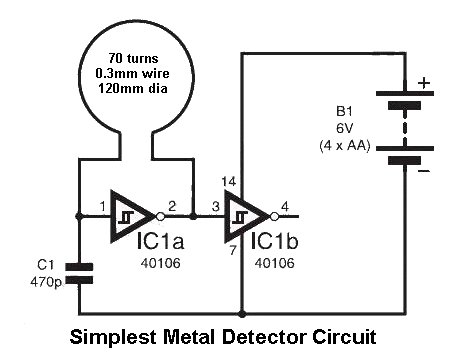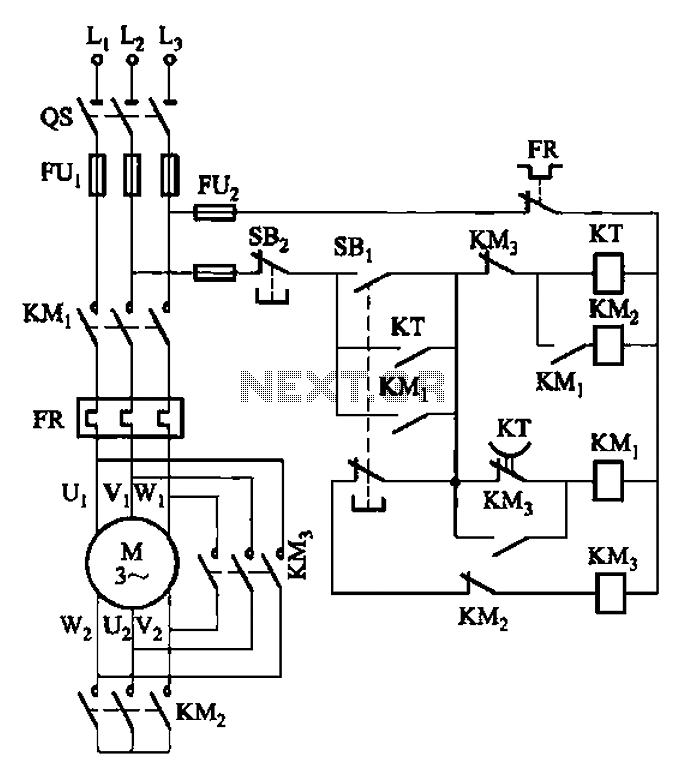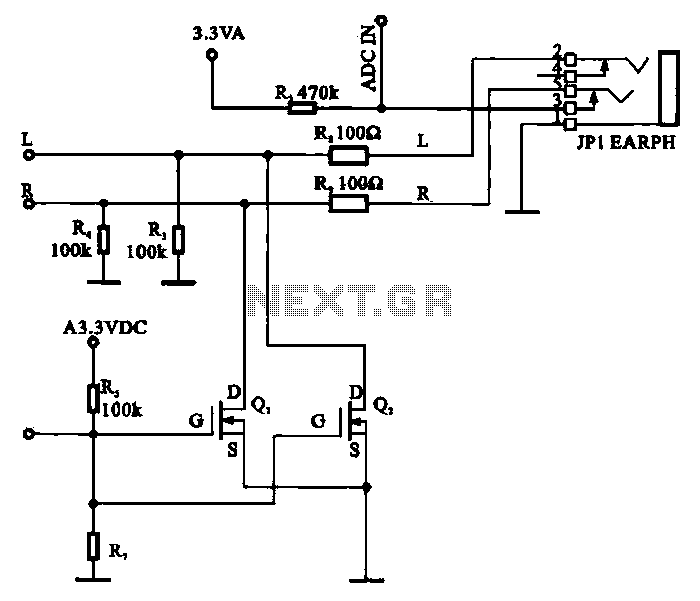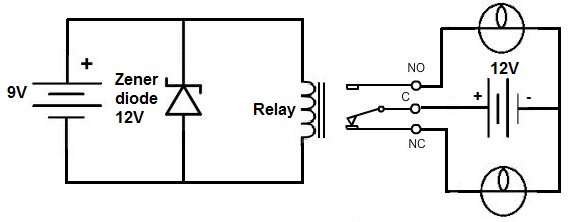
XTR108 circuit diagram of a four-wire RTD connection

As shown in FIG XTR108, a four-wire RTD is connected to the circuit. In practical applications, the lead resistance of a four-wire RTD is typically not equal, which necessitates the use of a precision operational amplifier, OPA277, to minimize voltage offset and drift. It is important to note that the circuit is highly sensitive to the lead resistance of the RTD.
The described circuit employs a four-wire Resistance Temperature Detector (RTD) configuration, which is advantageous for accurately measuring temperature by compensating for lead resistance. The four-wire setup consists of two pairs of wires: one pair carries the excitation current to the RTD, while the other pair measures the voltage drop across the RTD. This configuration effectively eliminates the effects of lead resistance, ensuring that the measurement reflects only the resistance of the RTD itself.
In this implementation, the OPA277 precision operational amplifier plays a critical role in enhancing the measurement accuracy. With its low input offset voltage and low drift characteristics, the OPA277 minimizes any errors that may arise from the inherent voltage offsets in the circuit. This is particularly important in applications where temperature measurements must be precise, as even small offsets can lead to significant errors in temperature readings.
The circuit's sensitivity to RTD lead resistance is a crucial factor to consider. Variations in lead resistance can introduce errors in the temperature measurement, which is why the four-wire configuration is preferred over a two-wire setup. By utilizing the OPA277, the circuit can effectively compensate for these variations, maintaining high accuracy in temperature sensing applications.
Overall, this circuit design is suitable for high-precision temperature measurement applications in various fields, including industrial process control, HVAC systems, and laboratory instrumentation. The combination of a four-wire RTD configuration and the OPA277 operational amplifier ensures reliable and accurate temperature readings, making it an ideal choice for demanding measurement environments. As shown in FIG XTR108 four-wire RTD is connected to the circuit. Four-wire RTD lead resistance in practical application is usually not equal, thereby increasing a precision op amp OPA277 to reduce the voltage offset and drift. It should be noted that the circuit is very sensitive to the RTD lead resistance.
The described circuit employs a four-wire Resistance Temperature Detector (RTD) configuration, which is advantageous for accurately measuring temperature by compensating for lead resistance. The four-wire setup consists of two pairs of wires: one pair carries the excitation current to the RTD, while the other pair measures the voltage drop across the RTD. This configuration effectively eliminates the effects of lead resistance, ensuring that the measurement reflects only the resistance of the RTD itself.
In this implementation, the OPA277 precision operational amplifier plays a critical role in enhancing the measurement accuracy. With its low input offset voltage and low drift characteristics, the OPA277 minimizes any errors that may arise from the inherent voltage offsets in the circuit. This is particularly important in applications where temperature measurements must be precise, as even small offsets can lead to significant errors in temperature readings.
The circuit's sensitivity to RTD lead resistance is a crucial factor to consider. Variations in lead resistance can introduce errors in the temperature measurement, which is why the four-wire configuration is preferred over a two-wire setup. By utilizing the OPA277, the circuit can effectively compensate for these variations, maintaining high accuracy in temperature sensing applications.
Overall, this circuit design is suitable for high-precision temperature measurement applications in various fields, including industrial process control, HVAC systems, and laboratory instrumentation. The combination of a four-wire RTD configuration and the OPA277 operational amplifier ensures reliable and accurate temperature readings, making it an ideal choice for demanding measurement environments. As shown in FIG XTR108 four-wire RTD is connected to the circuit. Four-wire RTD lead resistance in practical application is usually not equal, thereby increasing a precision op amp OPA277 to reduce the voltage offset and drift. It should be noted that the circuit is very sensitive to the RTD lead resistance.

